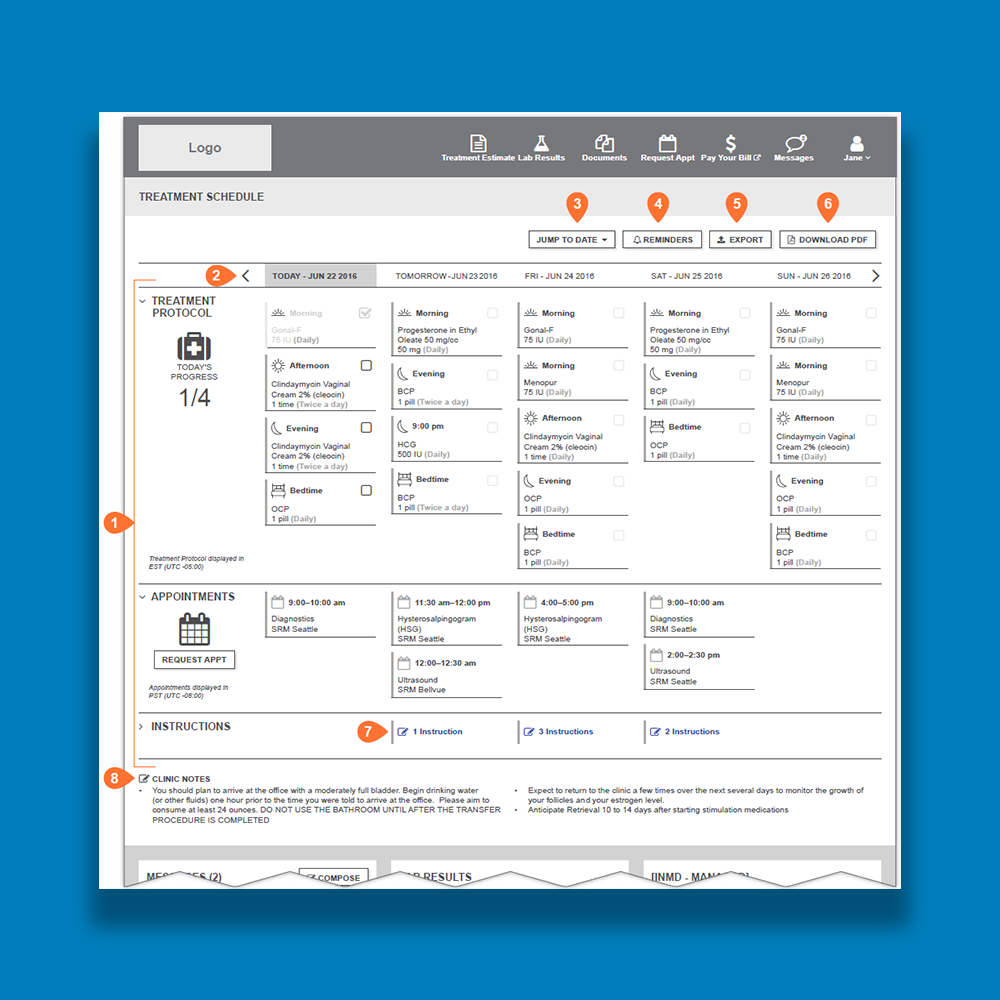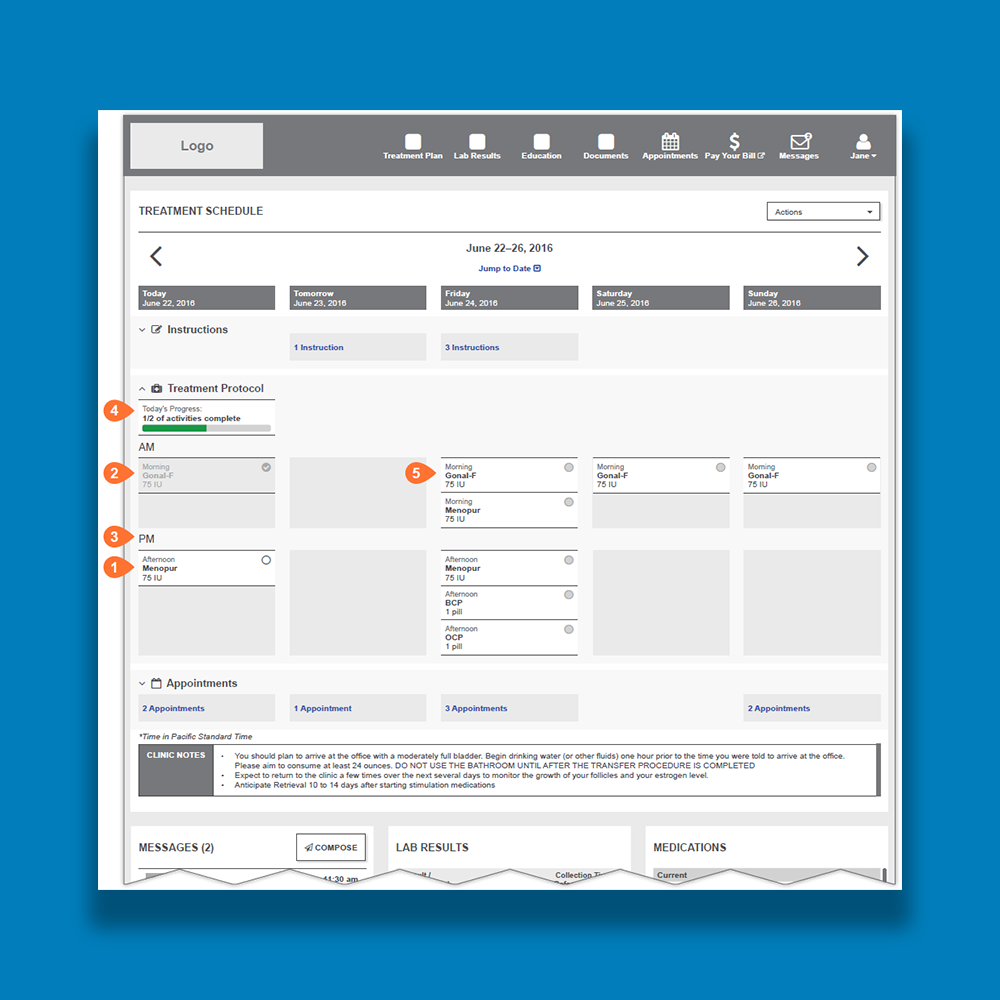Responsive web application design
Leveraging testing to improve designs
2016–2018 Senior Designer
Case Study
Isobar had recently been asked to help design a templated system for the client’s partner clinics’ websites. The client now wanted Isobar to design the next generation of software both for clinic staff and for the patients.
After the team performed weeks of contextual user research and developed a conceptual interactive prototype, the work was broken down into two web applications: the clinic portal and the patient portal. While I helped design the parts of the clinic portal—especially during the second phase portions for doctors and nurses—I was primarily responsible for designing the responsive patient portal.
One of the most challenging parts of the interface was the treatment schedule that would live on the homepage. It had to help the patient keep track of a complicated protocol of medications, remind them of upcoming appointments, and highlight any notes from the medical practitioners.
In our first pass, I separated the medications into those that needed to be for the morning and those for the evening. However, after speaking to some of the nurses, doctors, and patients, we realized that was insufficient. Medications could be prescribed for up to four times a day—morning, afternoon, evening, and before bed. Additionally, patients tended to remember which medication they needed to take by the timeslot and day to which it was assigned. As a result, in a later iteration, we increased the visual prominence of the treatment time over that of the medication name.
Learnings
While we greatly relied on insights from the initial discovery research for our designs, it was especially helpful to have access to users throughout the design process to be able to validate and critique our ideas. Having consistent user feedback lead to more iterations and fine-tuning of the system, as well as the challenge of reconciling the users’ feedback with the ideas of the project engineers. The application as a whole benefited from the feedback.
Additionally, the engineers were included early in the design process and we remained in close, constant contact with them. Their involvement kept our designs practical and achievable within the time constraints.
Figures

